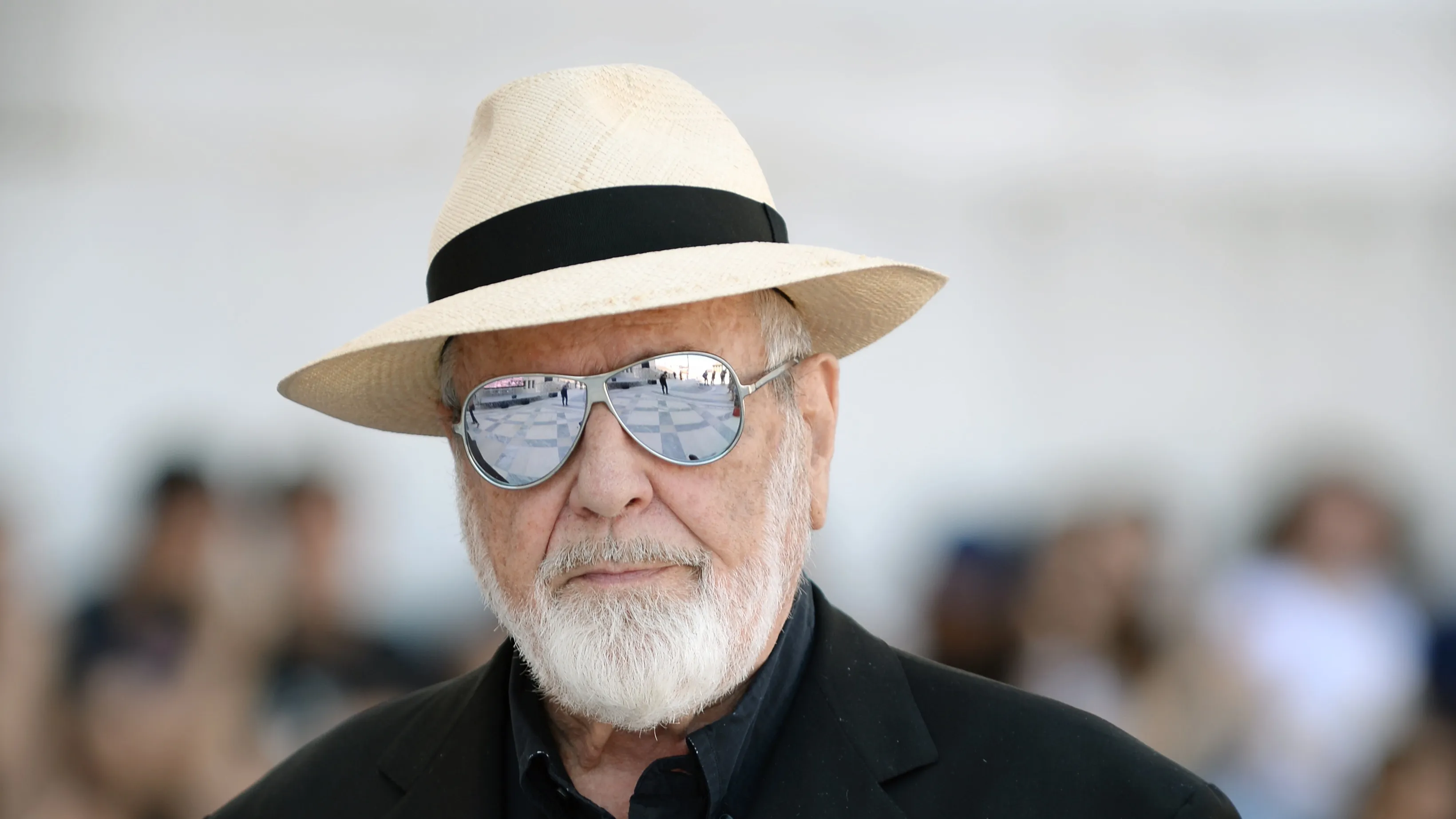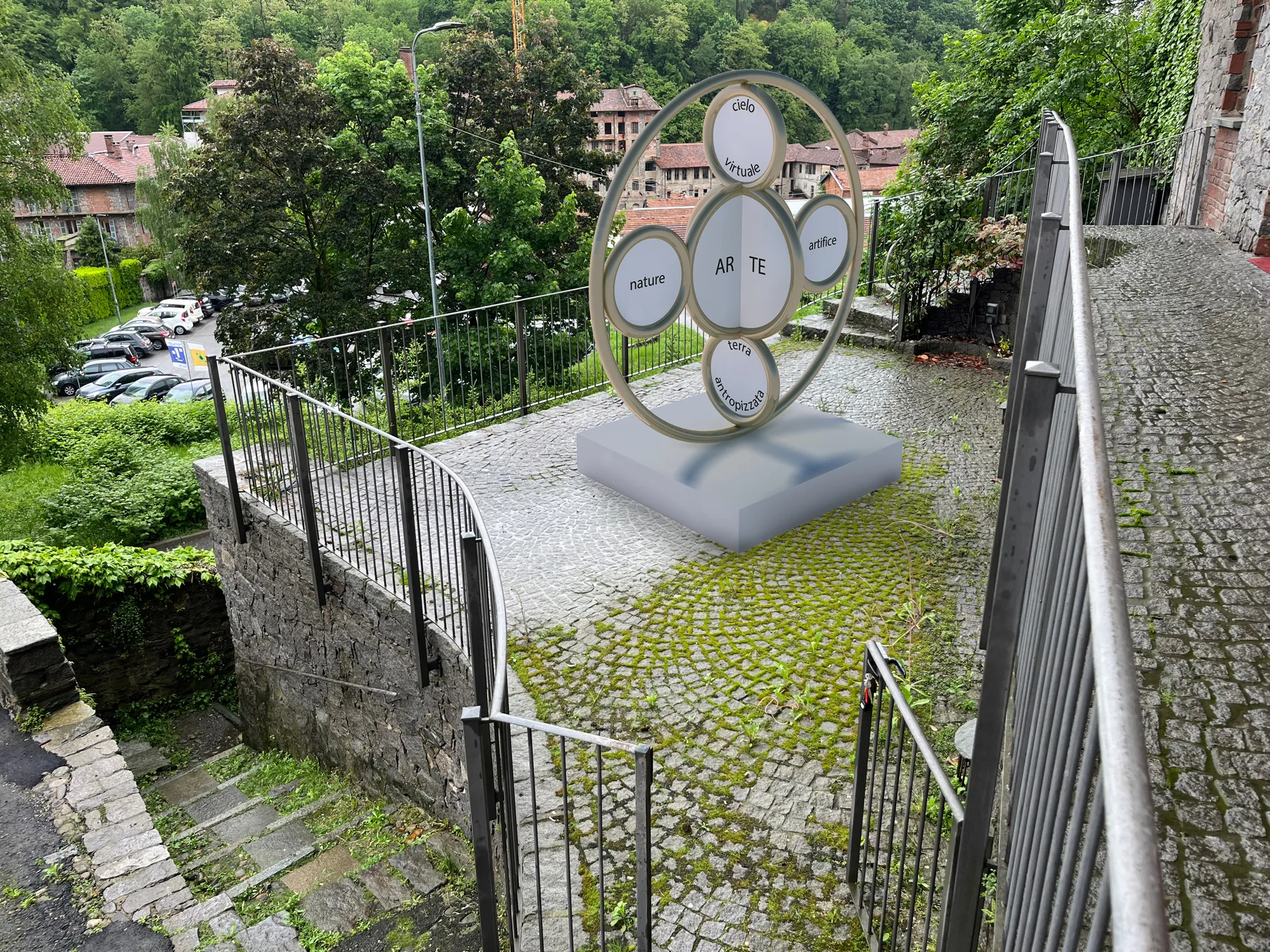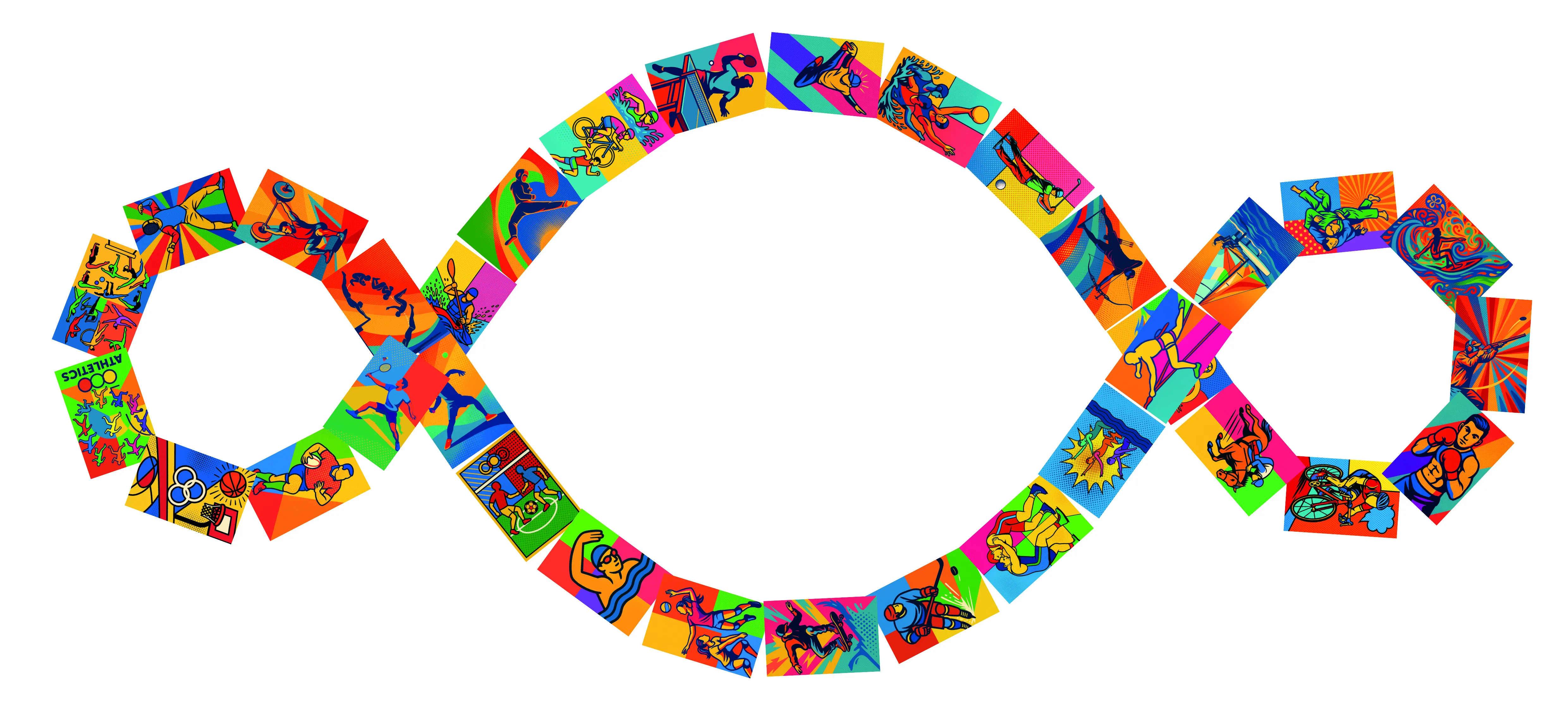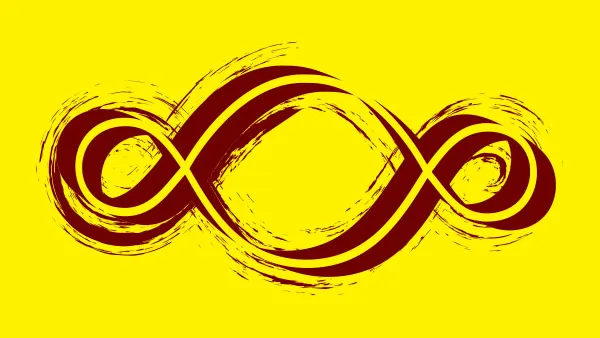What can we
help you find?
Ricerche suggerite

The Momentous Evolution of the Third Paradise
Spirituality and religion, trinamics and Statodellarte, creation and harmony: a threshold on “Arte al Centro” with the gaze of Michelangelo Pistoletto.
Michelangelo, through your art, you’ve always done more than just break cultural and social barriers—you invite people to love differences. Your commitment to building bridges across disciplines has borne a new fruit: the Office of Spirituality, housed at Cittadellarte in the former Gualino factory, now transformed into the Palazzo del Buongoverno. In relation to this multicultural lab dedicated to interfaith research and dialogue, how can art and spirituality come together to generate harmony in 2025?
The formula of creation has a twofold application. In connecting the opposing elements represented in the two outer circles of the trinamics symbol within the central circle, the result can be either monstrous or virtuous. Religion has the task of providing a connective symbol that fosters understanding among people. The word “religion” itself comes from religare—to bind together. Unity in religion has political consequences, because politics joins people to create society. Religion's original intent was to connect people virtuously, not monstrously. Unfortunately, the idea of predation, inherent to human experience - of nature feeding by preying on herself - is applied to the conquest of one individual or group over another. This distorts religare into relegare, meaning to separate—binding people into factions divided by opposing ends and principles, generating conflict and war. That’s what happens between religions and among social groups. These conflicts result in war, which reduces the “other” to prey—to something to be consumed to grow one’s own power.
So, no excuses: like art, religion bears the responsibility to inspire and generate preventive peace. And yet, so-called “holy wars” in the 21st century still don’t seem like relics of a bygone age…
The idea of a “preventive peace” that we must strive for comes from the belief that, through our intelligence and creativity, we can eliminate the predatory instinct. That’s precisely what makes humans cultural cannibals. As we see, the word “religion” and religious activities carry a vital responsibility: to build a system that does not exclude cultural or political diversity and simultaneously refuses any abuse by one group over another. Difference is a fundamental part of existence. But through the trinamics symbol—which places all differences in the two outer circles—we must connect them in the central one. Preventive and lasting peace can be achieved by reconciling monster and virtue to form a dynamic balance and widespread societal harmony. That, to me, is the value of religion. They may be different, yes, but all should share one purpose: to use the trinamics formula to transform conflict from war into peace.
Spirituality and Religion, Trinamics and the Statodellarte, Creation and Harmony: a threshold into “Arte al Centro” through the eyes of Michelangelo Pistoletto
When you visit Michelangelo Pistoletto—whether for a meeting, an interview, or an informal chat—you immediately feel welcome. Hosted in a home where art breathes from every corner, his energy envelopes you, his charisma and acumen captivate you, and that light, intrepid smile on his face draws you in. After the invitation to sit, a quick quip removes any trace of awkwardness. Face to face, he watches you as he speaks, hands moving in a kind of unconscious ritual that marks the beginning of the dialogue. A cup of coffee steams quietly in the background. And just as surely, you will always find Maria—his wife—at his side, gently offering you a small cup of moka-brewed espresso. In moments, its unmistakable aroma fills the room. He sips it as though it were a creative elixir, an inner tuning in before he takes you on a journey into unknown horizons. Suddenly, his expression changes. He’s resolute, ready to embark on a metaphorical journey. Because speaking with him means sailing new seas of knowledge—without ever leaving your chair. To talk with him is to learn. And no matter how many times you’ve heard him speak—as those fortunate enough to work at the Foundation often have—his words always leave a mark. They linger, for hours or even days after the conversation. An interview with him is never just about analysis or content, it is a gift—one offered not only to the interviewer, but to every reader.
At the Palazzo del Buongoverno, we find your new exhibition U.R.-R.A. Unity of Religions – Responsibility of Art, for a Preventive Peace, showcasing a series of never-before-seen installations. The acronym may surprise—recalling a word usually shouted in celebration. It feels like a collective call to joy. When, for you, will humanity truly be able to shout “Hurrah”?
Like all things, this word was born from chance. U.R. stands for “Unity of Religions,” and R.A. for “Responsibility of Art.” By chance, they combined into a word of exultation. You ask me when this might be exclaimed as the triumph of this interreligious peacemaking process… For me, the fact that already today, four individuals representing four of the world’s major religions—Christianity, Judaism, Hinduism, Islam, alphabetically— gathered at Cittadellarte to create and sign the Interfaith Charter for Preventive Peace is enough reason to say it. That’s a success. And from now on, anyone can share that charter. As more and more read and embrace it, many will be able to say “Hurrah!” with heartfelt conviction.
This edition of Arte al Centro marks what might be a revolutionary shift in your artistic vision: the symbol of the Third Paradise, which has become the theorem of trinamics and formula of creation, “transmutes” into the work Statodellarte. Is this a turning point or a natural evolution of the trinamics symbol?
The symbol remains unchanged as it moves from the Third Paradise to trinamics and the creation formula. As it is, it has been embraced by Cittadellarte as the unifying thread of all its undertakings.Cittadellarte itself extends its identity into the Statodellarte. The concept of Cittadellarte already contained, in its forward-looking vision, the transformation of the city into civilization—a civilization of art. Statodellarte is the transposition of Cittadellarte into practical, and therefore political, activity. It’s the natural continuation of Civitas, between city and civilization. So, as you asked, it makes sense to see this as the evolution from the Third Paradise to Statodellarte. The trinamics symbol originally placed untouched nature in one outer circle, and the rise of the artificial world—originating from the biblical bite of the apple, the original sin—in the other. Today, we are witnessing the final phase of that sin: devouring the apple completely, turning the natural world into something entirely artificial. This sin now reaches its climax, even in cultures where the apple was never part of the origin story. That’s why this moment, as you rightly said, is momentous—without precedent.
Now that we stand at this crossroads, fully aware of the all-encompassing spread of original sin, how do we steer toward a virtuous and lasting balance?
We hold the responsibility, as thinking beings, and above all as beings who have identified the formula of both natural and artificial creation, to take full control over the process to be. That is why art—creation— is the pathfinder. In a journey that reflects and inverts the one behind us. Art is found at the centre of a trinamics symbol that does not stand solely for the Third Paradise, but now represents an anthropised planet and the artificial sky enveloping it.

How is this reflected in Statodellarte? What are the circles that compose it?
Since the Industrial Revolution, the natural world has increasingly become anthropised. The weight of artificial products has grown heavier than the biomass of animals and plants. So now, one circle contains the anthropised planet, replacing the untouched natural one, while the opposite circle holds technological-artificial development—taking the shape of a virtual sky enveloping the Earth. Art is located in the central circle, with the task of harmonizing the original Third Paradise design (drawn horizontally) with this new vertical axis connecting the anthropised globe and the virtual sky. Art sits in the middle, a median plane between heaven and the earth, nature and artifice— vertical and horizontal trinamics converging. This global symbol is now displayed, at full scale, for the first time on the terrace of the Palazzo del Buongoverno, soon to be inaugurated, during Arte al Centro on June 28, 2025.
From spirituality and the Third Paradise to artificial intelligence: your new work Mirror of Eternity debuts at Arte al Centro. What, for you, is the mirror of eternity?
It’s the ability to live beyond the material world, through the virtuality of thought made possible by human creation. United through artificial intelligence, and with full respect for mortal nature in all its forms, we can share a common soul—one that continues generating thought, preserving the creative input of human beings during their physical life. I am not afraid of AI. On the contrary, I love it, as I love all of us. What I fear is the inability to use creative intelligence for virtue rather than monstrosity.
At the ground floor of the Palazzo del Buongoverno is a new space titled U.S.P. – United Sport for Preventive Peace. What’s the link between sport and preventive peace?
Within the Statodellarte framework, four pillars coexist: the Statodellarte itself with its constitution, U.R.-R.A., Unity of Enterprises, and U.S.P. . The first three explore the tragic fall from the biblical First Paradise to today’s dual-edged progress: one part elevating the wellbeing derived from human creation, the other descending into aberrant and monstrous excess. Now is the time to use the formula of creation to return to the true essence of humanity—the one embodied in the phenomenon of peace. And we already have a global, organized model: sport. All sports are based on competition, which itself embodies the formula of creation—a dynamic encounter between two opposing forces, which in the central circle can result in either destruction or virtue.
So, can sport be a socio-political model? And what, in this sense, is the role of victory?
We have reached international consensus: sports are governed by a shared ethical code, practiced legally worldwide. In no sport is it permitted to injure or kill the opponent. Every sport mirrors the universe’s conflictual nature—but it excludes the mortal outcome of war. Across all sports, we see the same rule: you cannot win by harming another human. In sport, we turn war-like energy into a force for peace. Victory is impartial, but it requires competition. It mirrors the concept of progress—where individuals push themselves to achieve the best outcome. Victory rewards the highest effort in the meeting of opposites. The opponent is not an enemy to destroy, but a necessary friend in the game. Every person—except in solitaire—is part of this grand human game. Through competition, we no longer kill. War does. Sport, by contrast, is already a universally practiced form of peace. Politics, religion, business, and economics should now look to sport’s rules to guide every future competition peacefully.
Let’s end with a different angle on harmony and preventive peace. Consider two simple, yet deeply symbolic gestures of daily life—formal or intimate. What social power lies in a handshake or an embrace, in your view?
Both should embody the formula of creation—two different beings drawn to connect and express themselves through an “embrace” within the central circle. The embrace can also symbolize union with the pure spirit of infinity. But in everyday human life, it reflects both infinity and the bond between love and procreation. Or perhaps it is simply the social application of trinamics—attraction turned into connection.






